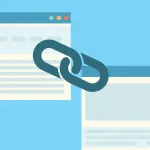What are the advantages of children and technology?
Good news first: It’s not an accident if your kids love using your new tablet computer. In fact, there may be several positive results from early childhood technology use. Research shows children and technology do well together. Early technology use can also help prepare children for school and beyond.
Children’s responses to educational lessons and experiences directly influence their future educational opportunities. According to studies, those who are most attentive and interactive perform better in school, and they often remain in school longer than those who aren’t as interested in learning.
Children who are highly motivated to take notes better in school, and they have greater attention spans than their classmates. Even the most technologically savvy kids to use technology to enhance learning, according to research.
Children and technology work very well together for the simple reason that children learn best when they are having fun. That is why computer games with educational objectives are so important.
Children and technology go hand in hand, because technology is making it easier than ever before to find games, music, videos, and Internet applications that can grow a child’s intellectual abilities. In fact, many of today’s educational games are geared toward early childhood development.
In the past, parents were less likely to allow children to play video games or engage in media use because these activities were considered too advanced for the young mind. But technology has evolved so that even very young children can enjoy these media forms.
Parents today want to provide their young children with the opportunities that will prepare them for the future. As we have seen with the decline in traditional schooling, parents want to find ways to keep their children engaged in activities that will lay the foundation for their future. And one of the best ways to do this is through early childhood education.
Early childhood education curriculum provides a variety of educational opportunities for kids from birth to age nine.
The first step in this direction is to develop an early childhood education position statement. A good position statement should include the vision of the organisation for which the school will serve as well as key goals and missions. Then it should clearly define core academic and nonacademic activities.
Children and technology position statement also should include how the school plans to enhance children’s experience using technology. The school should lay out how technology will be used and what the operating procedures are.
Many schools have adopted universal design programs. These programs are aimed at designing schools that appeal to a wide range of interests and abilities. At the same time, technological skills are taught using the most up-to-date equipment and technology available.
Early childhood educators understand that children tend to develop best when they are enjoying themselves. So they teach kids to use technology in a way that makes them want to use it.
Early childhood technology use includes using technology to play games, obtain learning objectives, and communicate with other children and adults in many ways. For example, children learn to count, identify colors and shapes, make simple pictures, and do basic manipulation using letters, shapes, and math.
Early childhood technology also helps kids learn the basics of science and identify the parts of the world around them. Early childhood technology use can help children learn about animals, nature, space, and human anatomy.
One research study estimated that children who are completely bored with the computer screen can lose their grasp of the concepts being presented. It is possible that technology may have a negative impact on our growing brains. However, there is plenty of technology available that is fun and engaging. With this, we can expect our children to develop healthy attention spans and a thirst for knowledge.







